Please contact us!
En
Froebel, the father of early childhood education, believes that children's nature is developed in activities, so play plays an important role in children's life and education.
This paper analyzes how to design playground facilities, landscape and space according to the characteristics of children's psychology and behavior.
Children's Environmental Psychology and Behavioral Characteristics
Age division of children
According to the actual situation, domestic psychologists divide children's psychological development into the following stages:
Gender division of children
1. The ambiguous period of children's gender → 2. The sensitive period of children's gender → 3. The period of differentiation between boys and girls
Young children aged 0-2 often cannot distinguish the gender of themselves and others. As children grow older, children enter a corresponding gender sensitive period, and they can identify gender based on human appearance, voice, and behavior. In the period of gender differentiation, children have a clear division of gender boundaries and a strong sense of gender.
Boys choose behavioral environments with typical male characteristics of extroversion and openness. They have a strong curiosity and a tentative heart for new things, and like exciting, high-frequency, and adventurous physical games. Girls, on the other hand, prefer static outdoor activities with low energy consumption, such as swinging, walking mazes, dancing, jumping rubber bands, playing house, making sand sculptures, etc.
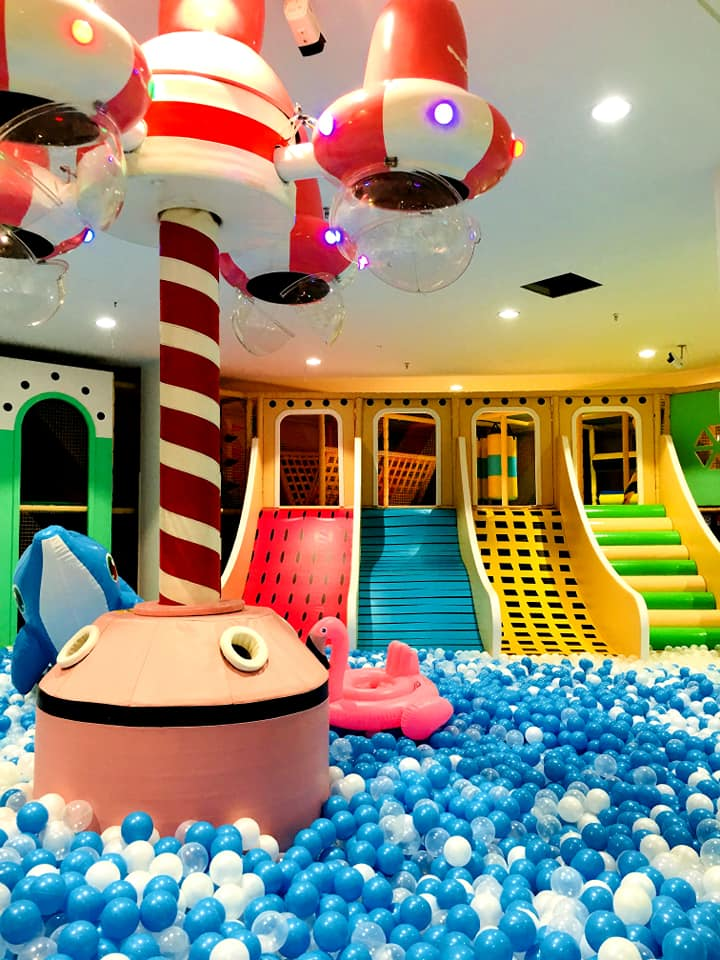
Cognitive development of children
Piaget divided the sequence of children's cognitive development into four stages:
Magical bubbles for children
Because of the physical differences between children and adults, children's behavioral unit scale is smaller than that of adults. In children's outdoor activities, children maintain individual distances, not the usual distance scale standards for adults as described by Professor Gale.
Children in essential and spontaneous activities are easily controlled by parents and other adults and lack the subjectivity of activities. In social activities, however, the "personal bubble" enclosed by the psychological dimension and the resulting sense of distance are special to children.
Children can navigate unfamiliar environments with ease and communicate easily with other children. People can often see unfamiliar children become close partners and form close cooperative relationships because of games.
Characteristics of Children's Outdoor Behavioral Activities
1. Age Aggregation
Children of similar age like to gather together and play, and the content varies by age.
Young children prefer simple and natural elements, and pay attention to their participation in game activities. Such as insects in nature, grass, wildflowers can attract children's attention.
However, older children have a strong curiosity and desire to explore the unknown things in the artificial environment, and like exciting and novel game content and game activities.
2. Seasonality and timing
Usually, children's outdoor activities are the most in spring and autumn, followed by summer, and the least in winter; Most of the children's play is during the holidays, and the peak period of play is formed between 9:00-11:00 and 15:00-19:00.
3. Egocentric
Children's behaviors always show a certain degree of "egocentric" state. Especially in the activities of preschool children, because of the single group of people they come into contact with and the limited range of activities, their behavior and activities always perceive the external environment according to their own scale.
4. Activity dependencies
Children's environmental behavior activities are highly dependent. In addition to reliance on recreational facilities, they also show reliance on parents, teachers and other guardians when they are outdoors alone. Children are well-behaved, submissive, calm, and solitary in isolated outdoor settings. In group activities, once their dependent objects become small partners, they immediately show the true nature of children, lively and active, chasing and playing with each other.
It can be seen that, for children's outdoor behavior, what they need most is activity partners, and the space and facilities for games are second.
5. Get close to nature
Children are easily interested in things in nature. They like grass, ponds, and sand. They like to run freely on the grass, and observe chickens, ducks, fish, shrimps, etc. in the river.
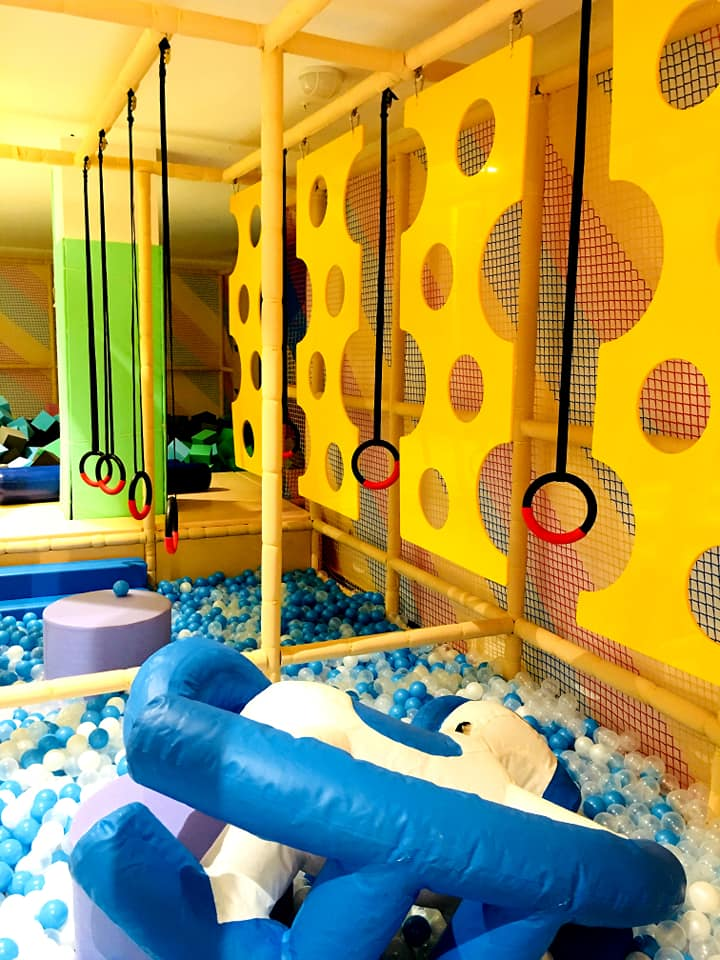
PRIORITY OF CHILDREN'S BEHAVIOR
Among the children's series of behavioral activities, which behaviors are the children's highest priority?
1 Satisfaction of "performance desire"
Children like to attract attention from others. For example, in a team game in an unfamiliar environment, boys will choose the most exciting and risky game first, so as to show agility and bravery to win the envy, praise and respect of other children.
2 Satisfaction of "exploration"
Children are strongly curious about new things, and the clever design can further stimulate children's "thirst for knowledge" to achieve a good promotion effect.
3 "Interest" satisfaction
Has both short-term and long-term timeliness. Short-term interests can prompt children to form a strong "dynamic flow". Long-term interests lead children to a higher priority—“inquisitiveness.”
Playground equipment Facilities Design
Ride Design Trends
1. Return to nature - invisible design
The main connotation of intangible design is the naturalness, abstraction, creativity and versatility of design, among which naturalness is the central principle of intangible design.
2. Game without facilities
Imagination is the most important and most effective means for children. Children always like "monotonous" equipment that we can't understand - abstract shapes that are not defined, such as rocks, sand dunes, etc.
In the design of amusement facilities, some "fuzzy" spaces without specific functions are created to provide practical opportunities for children's creativity.
3. Play with intuition
Different from the traditional design of children's amusement facilities, the new design not only emphasizes the entertainment of the game, but also emphasizes the education and interaction of children. This includes hearing, sight, touch, smell, etc.
The design form of children's amusement facilities will become more and more simple. It is a collection of high-tech and informatization based on the natural environment, and pays more attention to interactive and experiential design.

Classification of playground equipment facilities
Classification of traditional amusement facilities: swing type, slide type, swing type, climbing type, lift type, suspension type, drill climbing type and trail type, etc.
According to natural elements, the game can be divided into sand, gravel and soil-based, water-based, plant-based and other recreational facilities.
Design elements
Design elements of children's amusement facilities dominated by sand, gravel and soil
1. Styling
Squares are the most common, but round, oval and free arc sandpits are more popular with children.
2. Scale
The edge of the bunker enclosure should be between 100 and 200mm higher than the ground level, so that children can easily step over them without tripping when entering and leaving the bunker. Pay attention to the ratio of the number of users and the area of the bunker to avoid crowding.
The supporting facilities of the bunker, such as the faucet and the height of the seat on the side of the bunker, should ensure the convenience of children's use, while taking into account the use of parents.
3. Colors and Materials
The edges of the enclosure are collaged with brightly colored ceramic pieces or mosaics, or the facility materials that are different from the sand texture are used, so that children can experience more tactile sensations when playing with the sand.
4. A sense of space
Setting up undulating terrain in the sand play area can make the sand play space more lively and interesting. Activities such as sand paddling on steep slopes can fascinate older children. Taking advantage of the sloping terrain and setting up a conveyor belt device to transmit sand and water can also add a lot of fun to sand playing activities.
5. Security
Set up warning signs to indicate dangerous areas. In addition, outdoor natural children's baths or artificial sand play areas should pay attention to shading, and set up as many drinking fountains as possible to prevent children from dehydration and heat stroke in hot weather.
Design elements for plant-based play equipment for children
1. Form
Master the characteristics and growth laws of plants to ensure that the colors of the facilities are coordinated and unified. Because plants have the characteristics of growth, the size and color of the growth process and maturity are also a major factor to be considered in the design.
2. Function and gameplay
Artificial turf is flat and clean, suitable for running, close to people, and can change according to the highs and lows of the terrain. Flowers are mainly used for viewing, and can be interspersed in the design. Large trees can be used for climbing. Shrubs act as a barrier and are suitable for play structures such as mazes.
3 Seasonal
The biggest difference between plants and other natural elements is that they are seasonal, and different plants show different seasonality. It is necessary to clearly understand the changes of the plants used in each season to ensure the aesthetics and functionality of the facility in each season.

Design Elements of Water-Based Children's Play Facilities
1. Styling
Mainly based on natural and irregular arcs and curves, the edges of free curves allow children to feel the unpredictable nature of water.
2. Scale
The water depth of the water area should not exceed 200mm, and children should keep the height above the water surface above their knees when playing in the water.
3. Colors and Materials
Provide facilities for children to spray water in bright sunlight, such as hoses or sprinklers. Children can spray water jets or water sprays against the sky of the sun, and they can see rainbow-like colors reflected on the water sprays, so as to explore the natural mysteries hidden in light and water.
4. A sense of space
There are several small pools in the big round pool, and children can choose pools of different depths and sizes to play according to their age and height. Using water curtains or water mist to separate ordinary paddling pools will also make playing more fun and exciting.
5. Security
The safety of children playing in water should be the first priority. Children should try to stay on the shore of shallow water to play, and pay attention to foreign objects on the ground and sun protection.

Playground Amusement system Design Steps
1. Place of use
First of all, it is necessary to determine the environment in which the designed product will be used.
2. Target population
Identify the age group of users and understand their needs.
3 types of facilities
After limiting the range of children's age groups, select the appropriate type of facility.
4 modeling positioning
The shape is designed from the perspective of children. The shape should be novel and unique, full of creativity, simple and easy to understand.
5 Material positioning
According to children's nature, they prefer soft, natural, warm materials such as wood, twine, etc.
6. Color positioning
Soft solid colors should be the main colors in color selection. For example, the green of plants in nature and the blue of the ocean are more popular with children.
Virtual Reality and 3D Scanners
Virtual reality (Virtual Reality, VR for short; also translated as spiritual realm, virtual reality) is a high-tech emerging in recent years.
Add emotional factors to the design of children's amusement facilities, such as modern media such as sound, video, etc., to convey the story design of children's amusement facilities and make it more realistic and vivid.
Such children's amusement facilities design will bring unprecedented visual and auditory entertainment effects to children's entertainment.
Landscape Design for Children
Plot concept for children's landscape
In a sense, landscape design has something in common with literature and film and television works, that is, to achieve the purpose of attracting people through the constant transformation of time and space.
Due to the particularity of its service objects, children's landscape places pay special attention to the arrangement of the plots of the places. The plot here refers to the way a particular theme evolves, or the vivid "development" of a design theme.
Purpose: To make the site design have an ups and downs plot structure, so that children can feel like they are in the wonderful dream of fairy tales, and build their own aesthetic values through play activities.
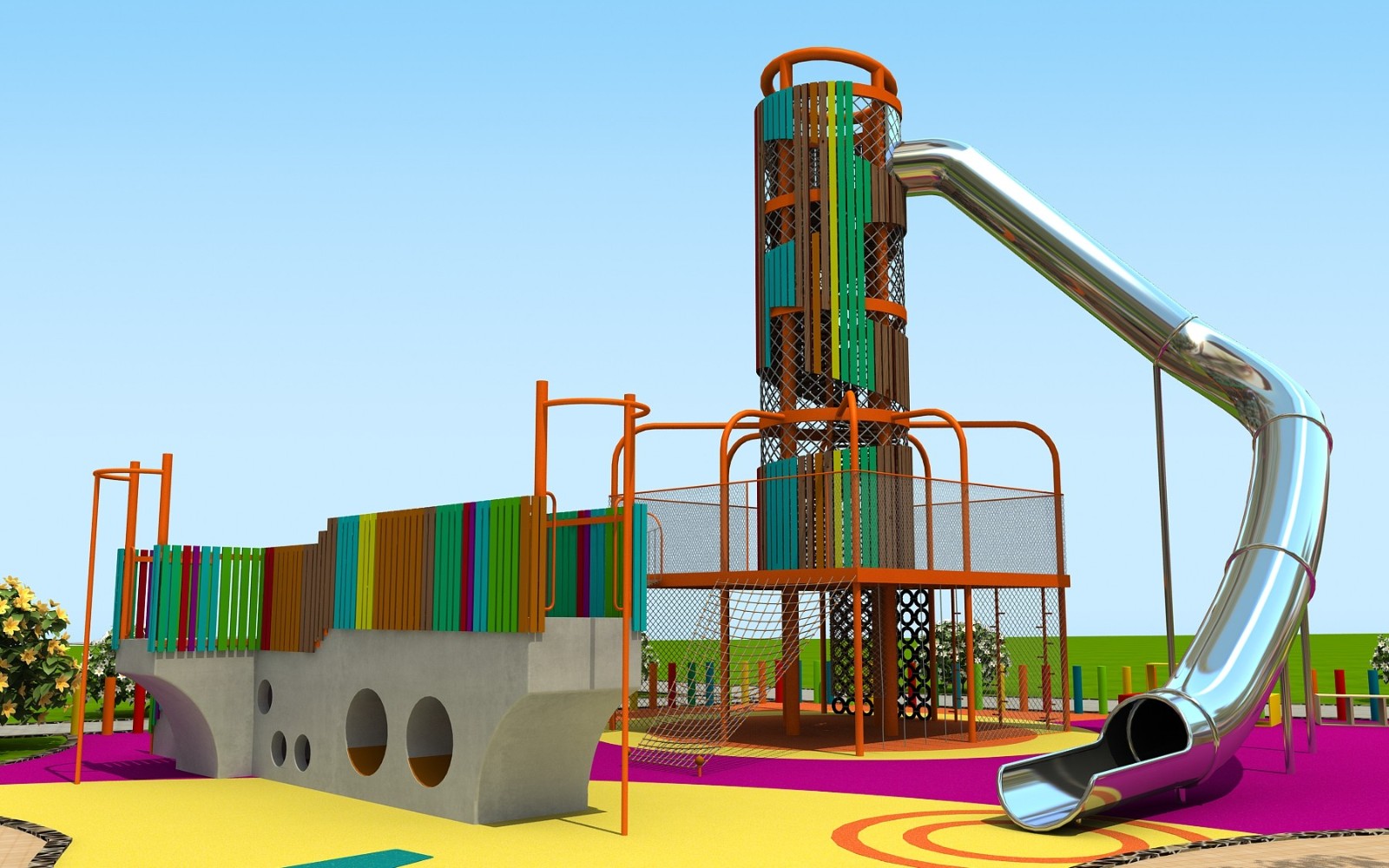
Principles of plot construction in children's landscape sites
1. In line with the arrangement needs of the design theme
The plot serves the theme, and the logic of its construction must conform to the design theme and purpose, and can effectively and dramatically convey the theme.
2. In line with the design needs of children's landscape places
The introduction principle of the plot should not contradict the usual design principles of children's landscape places, that is, healthy and changeable, without affecting safety and convenience.
Meet the various needs of service objects, children and other groups of people, give full play to the advantages of local tree species, consider the change of scenery in the four seasons, and achieve a reasonable mix of trees and shrubs.
3. Meet the special needs of other users
In addition to children and parents of all ages, there are also a small number of other groups. Provide a sunny activity environment for children's entertainment, and at the same time pay attention to creating an auxiliary environment for other groups of people to play and rest.

The plot construction of children's landscape places
The plot construction of children's landscape places draws on the construction methods of literature and film and television works, combines its own characteristics, and summarizes it according to the logical sequence of plot development in landscape places and the two classification methods of artistic characteristics.
a. According to the logical sequence of plot development: linear structure - network structure.
Linear structure: refers to the fact that each plot node (attraction) is connected according to the natural order of time and the causal relationship of events, and extends linearly.
The linear structure is divided into single-line and double-line. The single-line type is a single-line type, and the double-line type structure can be divided into: cross type, that is, 2 or more plot clues, which intersect together; parallel type, 2 or more than 2 The plot clues go in parallel.
Mesh structure: If the intersection of nodes is more complex and thorough, it can be transformed into a mesh structure. This is another way of structure, with the theme as the center, and the relationship between the plot nodes and landscape places is intricate and like a spider web.
b. The artistic features developed according to the plot: intrinsic structure-realistic structure-prose structure.
Intrinsic structure: that is, all plot nodes (attractions) are developed and carried out closely around a metaphysical abstract idea-consciousness, viewpoint, and thought.
Realistic structure: Focus on displaying the prototype of the site, that is, the so-called "intervention of the site with zero emotion", starting from the objective conditions of the site, calling for people's participation, and emphasizing the user's promotion of the plot.
Prose structure: The plot is presented as prose-like fragments, which are scattered but not scattered, that is, through fragmented, beautiful, rich and imaginative scene design, a vivid artistic conception is created and a specific theme is expressed.

Skills of plot construction in children's landscape places
1. Setting skills of plot nodes
The design of the plot nodes (attractions) should focus on the situation, while the situation design should focus on the details. The "entering the game" of the amusement facilities (or other facility sketches) is a very important part. The swings, Trojan horses, rock climbing, etc. are individually customized with the plot, which can make the plot more complete and vivid.
We also pay attention to the vegetation configuration, considering the vividness and rendering the atmosphere, such as the large bamboo forests like a dream, the beaming wicker red lantern strings, the fairy tale-colored tulip tree forest, etc.
You can use the changes of light and shadow to create wonderful things. You should also give full play to the artistic charm of sound, design all kinds of speakers that match the theme, play background music, and design scenic spot explanation systems.
2. Plot layout skills
There is a term in the arrangement of the plot, called montage, which means "assembly". There are two basic types, namely narrative montage and expressive montage. The plot construction of landscape site design can draw lessons from montage techniques to organize scenic spots. , or smooth and continuous, or ups and downs, fascinating.
Through reasonable plot setting, providing conditions, focusing on "foreshadowing", and actively mobilizing the participation awareness and initiative of the participants (mainly children), the plot development can be better promoted. Provide neutral scenes, engage children in the shaping of the plot, and bring bland scenes to life immediately.
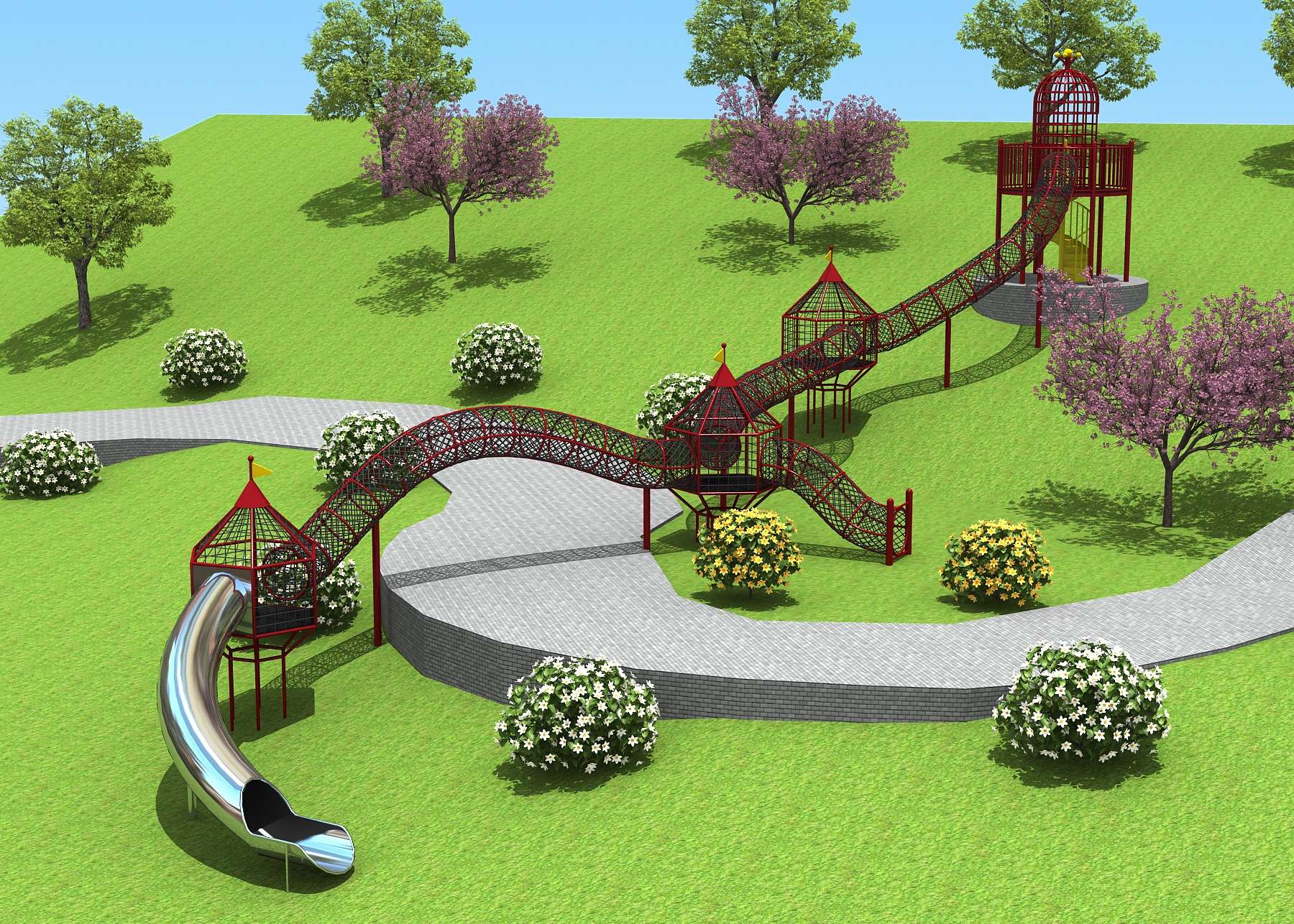
Case Study
The scheme adopts a linear-prose structure. The original site of the base is "Zheng He Park", and a children's park is built on this plot. It still takes Zheng He's fearless spirit as a design clue, and combines children's nature of exploration and creation to construct a game plot.
The park is divided into 4 functional areas: "Sensory Adventure", "Pre-flight Adventure", "Jungle Adventure" and "Island Adventure". , the plot construction is complete and innovative.
"Sensory Adventure" is a venue for the assessment and screening of the physical fitness of the little sailors before the flight in the plot chain. It is also arranged at the entrance and exit. It is designed as a children's activity area. , color viewing, shape identification, scenting and other sensations are stimulating, and there are scenic spots such as "puppy climbing", "listener", "bell jingle" and "barefoot garden".
"Pre-sail expedition" is the place in the plot chain where the sailors who have obtained the qualification to go to sea prepare for their sailing. It is divided into two parts, "Is the food ready" and "Shipbuilding Dream Factory". The former provides a miniature fruit and vegetable sowing and picking. Heaven and Earth, the latter is designed as a beach and the simple raw materials and tools such as logs, rudders, and hemp ropes scattered on it (unused, it becomes the sculpture of the site), providing a boat manufacturing base.
"Jungle Gym Adventure" and "Island Adventure" are simulations of different sailing environments encountered by the fearless little sailors in the plot chain after going out to sea. The plot of the park is full of ups and downs, and it is full of interest.
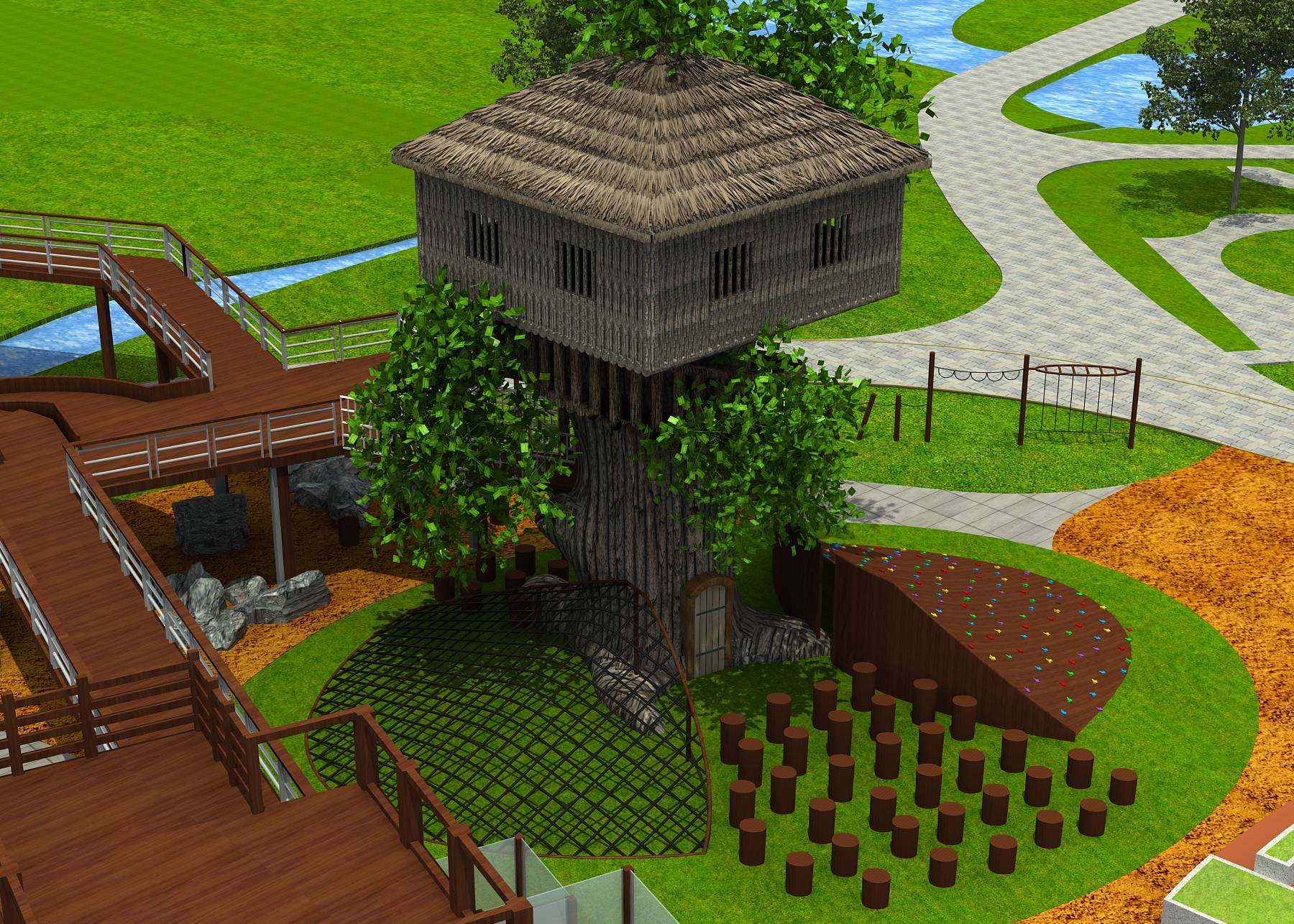
Outdoor Playground Space Design
Children's outdoor space
Children's outdoor space refers to the space with children as the protagonist in the external environment. For the existence of children's activities, provide children with psychological and physical services including games, communication, walking and other services.
Outdoor space design should be based on children's perspectives in plant configuration, paving, roads, streamlines, sand and scale.
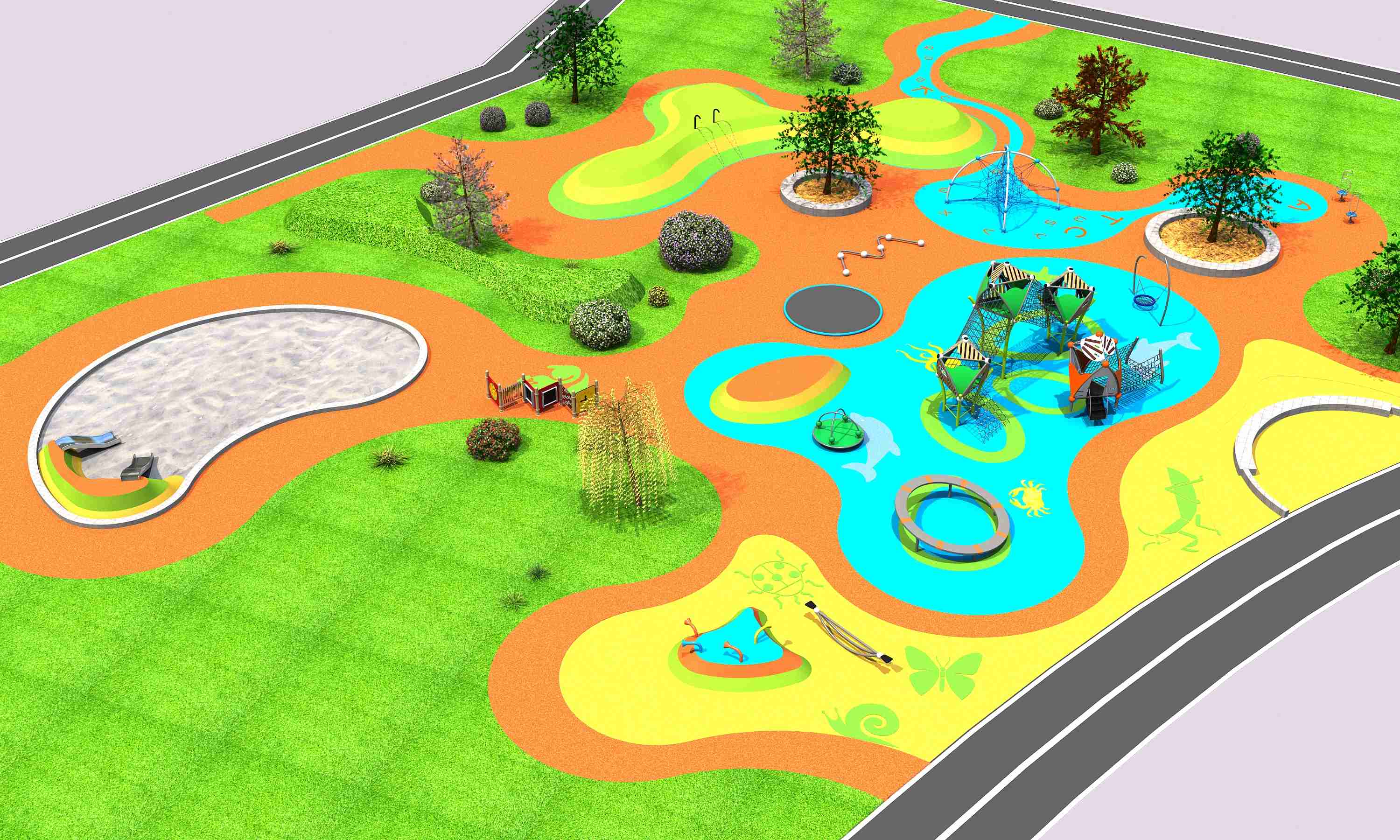
Types of Outdoor Playground Spaces for Children
formal event space
1. Kindergarten
The kindergarten's playground is aimed at preschool children, with simple amusement facilities such as seesaw boards, slides, and carousels.
2. School playground
School playgrounds are aimed at school-age children over 6 years old, and are generally dominated by sports activities, such as ball games, running, long jump, etc.
3. Children's Park
Children's Park provides a playground for children under the age of 12 to carry out popular science, cultural and sports activities. There are sand, fountains, merry-go-rounds, seesaws, slides, climbing ladders, wave bridges, etc.
4. Amusement parks, playgrounds
Amusement parks and playgrounds are venues with amusement facilities and amusement functions. For children of all ages, there are large amusement facilities such as roller coasters and Ferris wheels.
informal event space
Due to the randomness and contingency of children's activity behavior, any outdoor space with possibility of activity can become a temporary activity venue for children.
1. Urban residential area
This activity space is the most frequently used informal activity space among children's outdoor activity spaces.
2. Street green space
Children's activities mostly occur between the residence and the school, and the street green space is the main activity place for children when they walk.
3. City Square
This space is mostly located near the residential area and is a part of the urban public space, providing children and citizens with places for activities, leisure and entertainment outside the residential area.
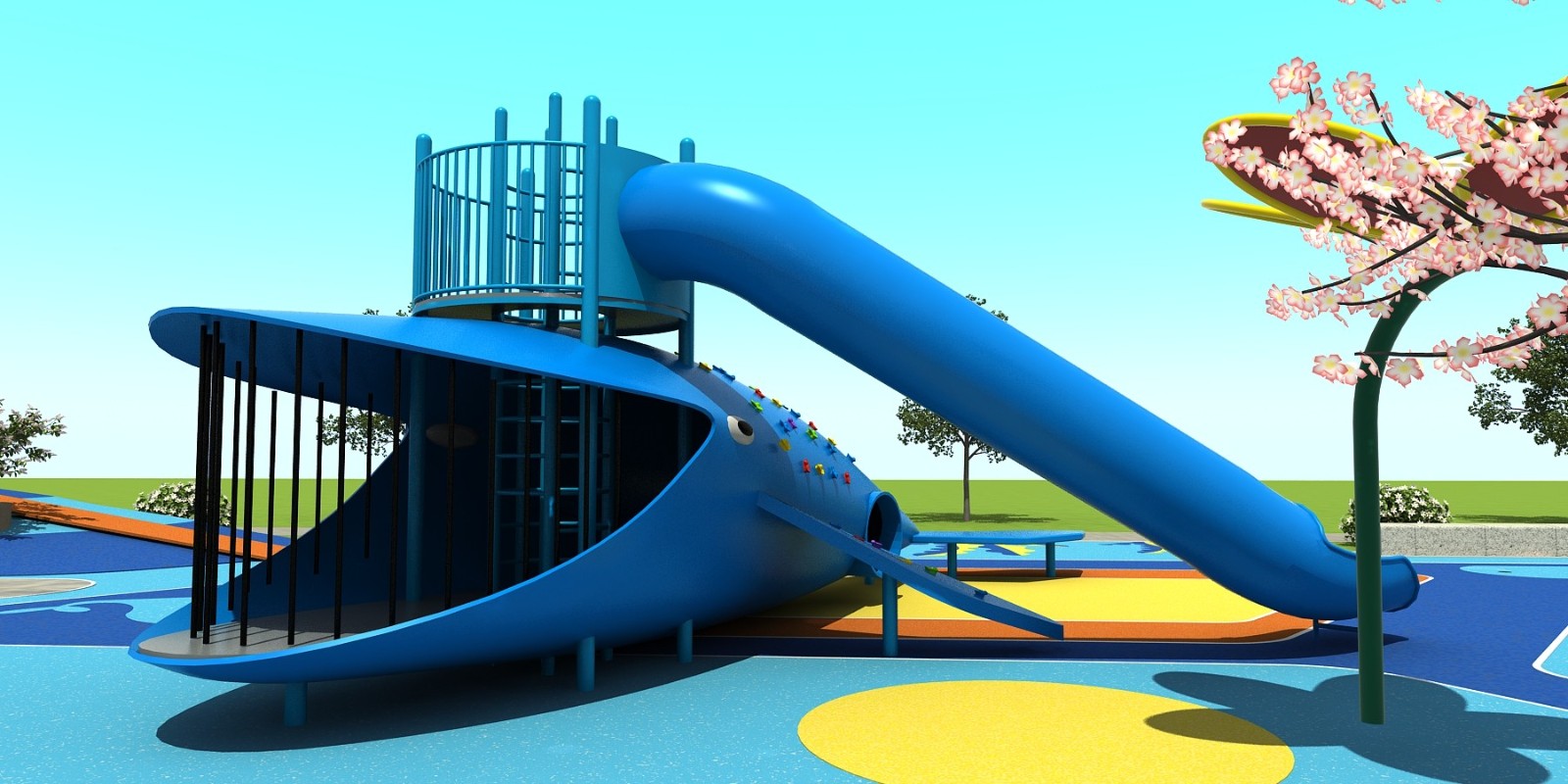
Components of children's outdoor Playground spaces
1. Boundaries
Boundaries are the boundaries that separate the outside world from the activity venue, and to a large extent play a role in protecting children's safety or implying the scope of the activity area.
2. Terrain
Terrain is the most important element that constitutes children's outdoor activity space, it is the foundation of determining the vertical design of the space, and it also enriches the sense of hierarchy of the space.
3. Vegetation
Plants not only provide shade, purify the air, reduce noise, but also provide children with opportunities to get close to nature. Try to avoid poisonous, thorny, irritating tree species.
4. Material
First of all, we must consider the characteristics of non-slip, clean, wear-resistant, shock absorption, etc., and cannot choose some materials that are easy to break, burrs, and toxic. Common ground materials include: colored plastic mats, anti-corrosion wood, permeable floor tiles, sand, etc.
5. Color
Children's perception of color is more inclined to the color with higher purity and saturation. Different psychological feelings can be brought to children through color division.
Natural Experiential Children's Outdoor Playground Space
The natural experiential children's outdoor activity space is a space that restores the natural environment and emphasizes the natural feeling.
In terms of children's choice of outdoor play environment preferences, the environmental characteristics most appreciated include: colors in nature, trees, woodland, changing terrain, shade, grass, places to climb and its exploratory and challenging place.
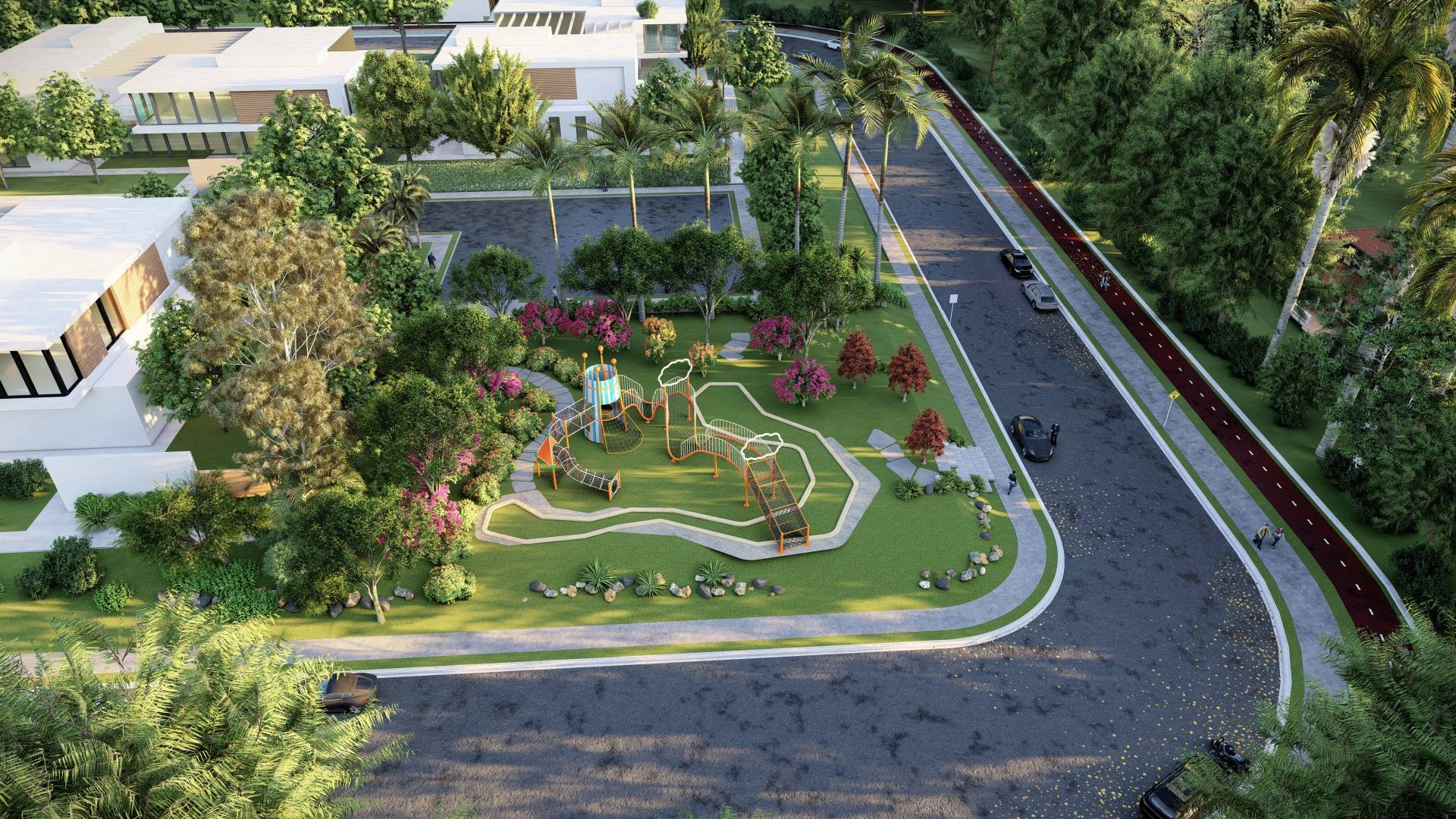
Copyright Wenzhou Dream Garden Amusement Equipment Co.,Ltd | Sitemaps|Xml
|Please contact us!

